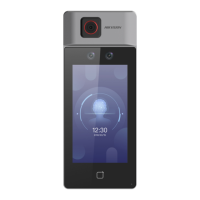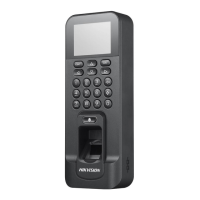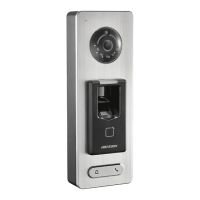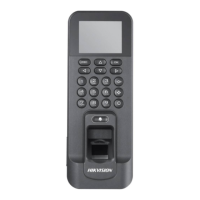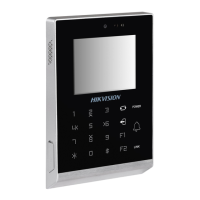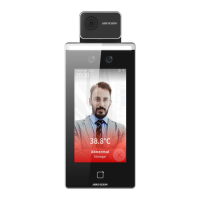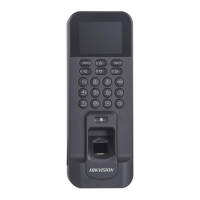
Do you have a question about the HIKVISION DS-K1T605 Series and is the answer not in the manual?
| Brand | HIKVISION |
|---|---|
| Model | DS-K1T605 Series |
| Category | IP Access Controllers |
| Language | English |
Details compliance with US FCC rules for digital devices, covering interference and operation conditions.
Confirms product compliance with applicable European standards and directives.
Highlights critical warnings that could result in serious injury or death if neglected.
Provides precautions for potential injury or equipment damage.
General introduction to the face recognition terminal and its application.
Lists the key capabilities and specifications of the device.
Guidelines for selecting a suitable location and conditions for device installation.
Step-by-step instructions for mounting the terminal using a gang box.
Step-by-step instructions for mounting the terminal directly on the wall.
Instructions on how to connect the terminal to peripherals.
Wiring diagram and instructions for connecting the secure door control unit.
Procedure for activating the device directly through its interface.
Using the SADP tool for device activation and IP address modification.
Activating the device through the client software interface.
Steps for initial login and administrator login.
Configuration of network, Wi-Fi, RS-485, and Wiegand parameters.
Managing users by adding, editing, deleting, and searching.
Procedures for transferring attendance, user, and parameter data.
Configuring attendance modes like manual, auto, and disabling the mode.
Methods for authenticating identity via 1:1 or 1:N matching.
Configuring basic system parameters, face, and fingerprint settings.
Configuring access control permissions, authentication modes, and alarms.
Procedures for firmware upgrades and data management.
Viewing device capacity, information, and open source license.
Adding, organizing, and managing person information in the client software.
Setting up holiday, week schedules, and templates for access control.
Creating and assigning access groups to define door authorization.
Configuring specialized access control features like multi-factor authentication.
Setting up device and client actions triggered by access control events.
Monitoring and controlling the status of doors and elevators remotely.
Configuring attendance parameters, holidays, leave types, and reports.
